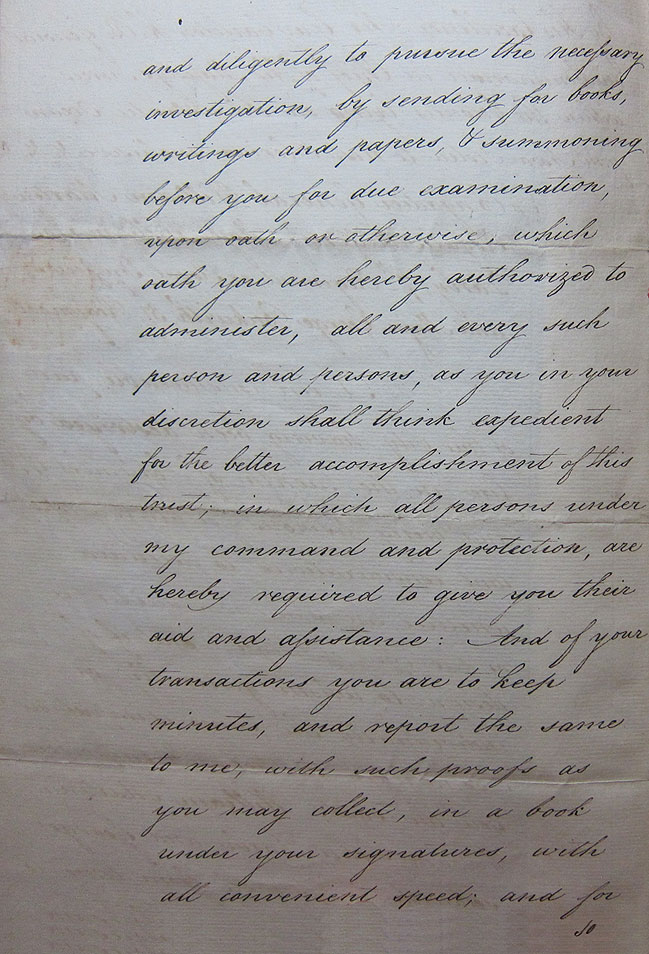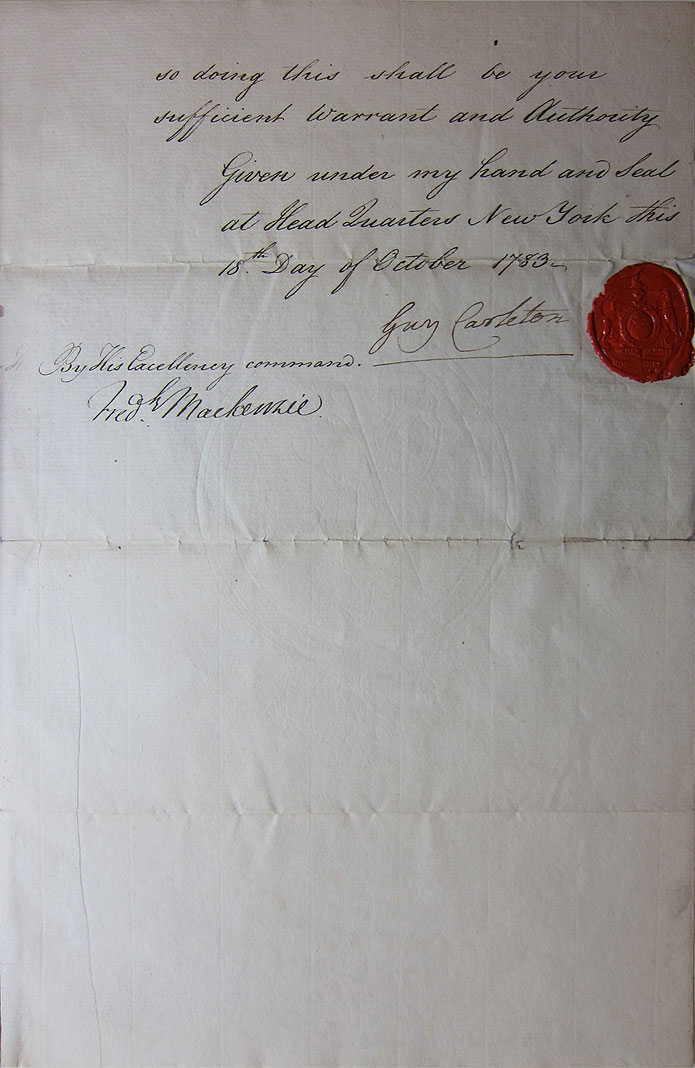Carleton Commission on the Great Fire of New York in 1776 (Dated 1783)
Introduction to the Carleton Commission Testimonies *
In October 1783 at the end of the Revolutionary War, General Guy Carleton, the Commander in Chief of the British forces in North America, directed a commission to investigate the disastrous fire in New York seven years earlier in September 1776. He wanted a comprehensive report focused on whether the fire was accidental or "the effect of design." If it had been planned, he wanted to know by whom.
While the commissioners were to perform the task "...with all convenient speed...", the emphasis was on speed not convenience. The commissioners could not dawdle. Thousands of British troops and support auxiliaries were already evacuating the country as were tens of thousands American civilians. Loyalists, freed slaves, civil servants, rich merchants, and others who felt threatened by the incipient revolutionary regime were sailing away as fast as they could. The date for the transfer from British to American rule in New York was less than six weeks away.
There were "divers important considerations" for the commissioners to make a credible determination of the cause and culpability for the fire. Not the least of these considerations was the Peace Treaty negotiated in Paris that had several gray areas for reparations and compensations. Carleton had already refused George Washington’s call for the return of runaway slaves to their 'rightful' owners.
To ensure there would be no claims on the British for the destructive fire, his commission was looking for evidence of what the British already believed…that the King's troops did nothing but try to save the city and that many Americans, with or without orders and acting in concert or by themselves, started fires to burn their own city. They searched for proof that would satisfy a British jurist... and they found it. It is in the testimonies of the almost one hundred pages below.
Those who mull over the testimonies to the Commissioners without prejudice and then accept the testimonies on the whole to accurately represent the reality of September 21st 1776 will come to the following conclusions:
- The fires were not accidental although the initial blaze might have been.
- Fires far from the initial fire were set within the first hour.
- The King's troops stopped the arsonists from burning more of the city.
- Patriots were caught in the act of setting fires; some killed, many arrested.
- Hidden combustibles were found on people and in caches throughout the city.
- City water pumps and fire buckets were vandalized.
- There was no high level American Congress or Military order to burn the city.
How these 'British' facts influence the narrative of the fire in the book Saving New York can best be appreciated by reading the book. There are, of course, 'divers considerations' of the testimonies themselves. For example, over eighty per cent of the testimonies were by those with pro-British sympathies mostly members of the British Army and civilian Loyalists. However, there were five firemen who testified and two members of the Provincial (later State of New York) Congress.
Directly below is the "charter" or authorization for the board of 'enquiry'. Nice handwriting, very much appreciated by transcribers in the 21st century. On other tabs here you can read the actual handwritten records of the Commission and the best attempts of the author to decode the manuscript. If you have additions, corrections, or better ideas, please email info@docema.com. If you disagree with the transcriptions there or the conclusions in the book, which you should read before you disagree, please email info@docema.com. Otherwise don't tell a soul.



* Transcription of the Carleton Commission Report – From the Manuscript of Proceedings of the Board of Enquiry as authorized by General Carleton in 1783 at the New-York Historical Society (New York City: Misc MSS Boxes 12 & 13 1776-1780). Click here for PDF of Transcription









